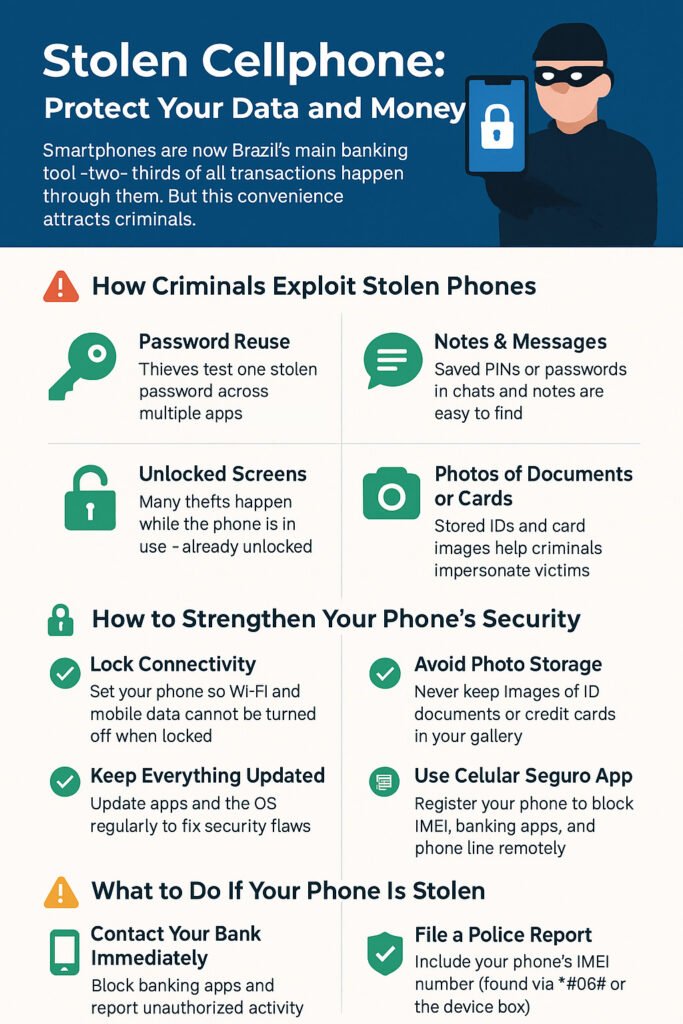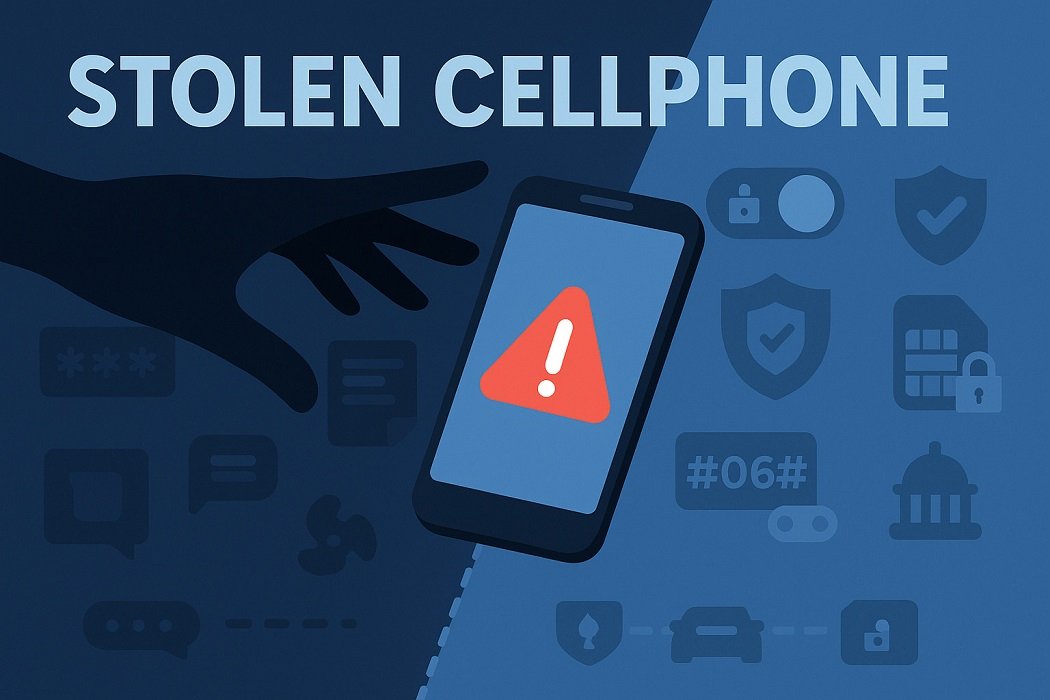Online scams have become increasingly common, demanding greater attention to the links and online content we interact with daily. Cybercriminals are constantly creating new methods to deceive people for financial gain, ranging from falsified payment receipts to fake technician impersonations. In Brazil, around 71% of the population has already fallen victim to this type of crime, which shows the need for caution when clicking on links in WhatsApp messages, emails, or SMS, as well as avoiding sharing personal information with strangers. To reduce risks, it is essential to understand how these scams work, recognize their main types, learn what to do if you are targeted, and adopt preventive measures to protect your data and avoid financial losses.
This article is part of a series on digital security. You can read the other texts here.
This Content Is Only For Subscribers
To unlock this content, subscribe to INTERLIRA Reports.
Stolen Cellphone
Smartphones have become the main tool for financial transactions in Brazil. According to the Brazilian Federation of Banks (Febraban), mobile devices account for two-thirds of all banking operations in the country. This convenience also attracts criminals. The number of cell phone thefts and robberies followed by banking fraud has grown significantly. In just a few minutes, criminals can steal not only your device but also your personal and financial information.
– How Criminals Exploit Stolen Phones
• Password reuse: Many people use the same password for multiple apps and services. If thieves gain access to one, they can test it on banking apps.
• Notes and messages: Victims often save card PINs, bank passwords, or sensitive data in notes or share them via messaging apps, making it easy for criminals to access.
• Unlocked screens: Since many thefts occur while people are actively using their phones, devices may already be unlocked, giving criminals immediate access to apps, email, and chats.
• Photos of documents or cards: Images stored in the gallery can help fraudsters impersonate the victim when contacting banks or financial institutions.
– How to Strengthen Your Phone’s Security
• Configure your phone so Wi-Fi and mobile data cannot be turned off when locked—this prevents criminals from disabling remote wipe.
• Never store photos of ID documents or credit cards in your gallery.
• Keep your apps and operating system updated to patch security vulnerabilities.
• Register your device in the Celular Seguro app (available for iOS and Android). This government tool allows you to block the phone’s IMEI, banking apps, and phone line remotely. You can also assign trusted contacts to report thefts on your behalf.
– What to Do If Your Phone Is Stolen
• Contact your bank immediately to block access to apps and contest any unauthorized transactions.
• File a police report including the device’s IMEI number. This unique code is essential to block the phone and can be found by dialing *#06#, checking the original box, or the purchase receipt.
• Use remote wipe tools to erase personal data and accounts.
– Key Takeaway
Treat your smartphone like your wallet: never leave it unprotected. Criminals are quick to exploit weak security settings, repeated passwords, or saved data. By taking preventive steps and acting fast in case of theft, you can greatly reduce financial and personal risks.





